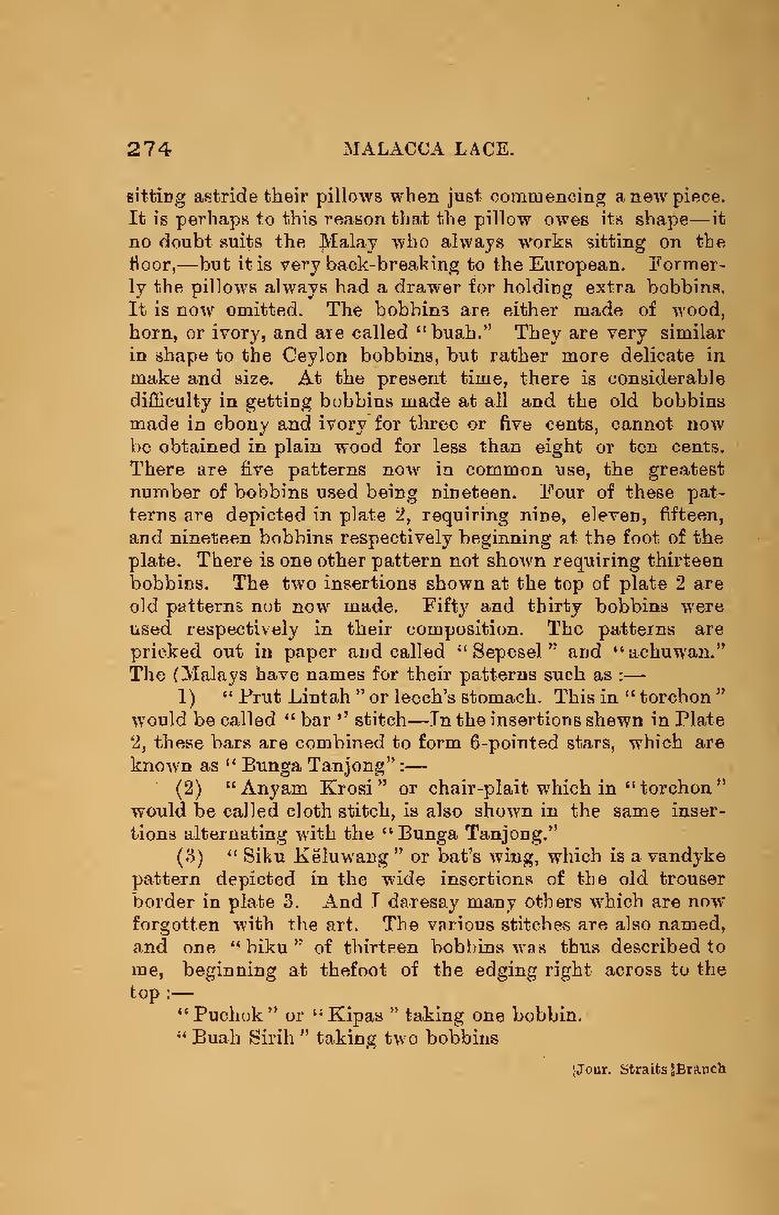sitting astride their pillows when just commencing a new piece. It is perhaps to this reason that the pillow owes its shape—it no doubt suits the Malay who always works sitting on the floor,—but it is very back-breaking to the European. Formerly the pillows always had a drawer for holding extra bobbins, It is now omitted. The bobbins are either made of wood, horn, or ivory, and are called "buah." They are very similar in shape to the Ceylon bobbins, but rather more delicate in make and size. At the present time, there is considerable difficulty in getting bobbins made at all and the old bobbins made in ebony and ivory for three or five cents, cannot now be obtained in plain wood for less than eight or ton cents. There are five patterns now in common use, the greatest number of bobbins used being nineteen. Four of these pat- terns are depicted in plate 2, requiring nine, eleven, fifteen, and nineteen bobbins respectively beginning at the foot of the plate. There is one other pattern not shown requiring thirteen bobbins. The two insertions shown at the top of plate 2 are old patterns not now made. Fifty and thirty bobbins were used respectively in their composition. The patterns are prieked out in paper and called "Sepesel" and "achuwan." The Malays have names for their patterns such as:—
(1) "Prut Lintah" or leech's stomach. This in "torchon" would be called "bar" stitch—In the insertions shewn in Plate 2, these bars are combined to form 6-pointed stars, which are known as "Bunga Tanjong":—
(2) "Anyam Krosi" or chair-plait which in "torchon" would be called cloth stitch, is also shown in the same inser- tions alternating with the "Bunga Tanjong."
(3) "Siku Kěluwang" or bat's wing, which is a vandyke pattern depicted in the wide insertions of the old trouser border in plate 3. And I daresay many others which are now forgotten with the art. The various stitches are also named, and one "hiku" of thirteen bobbins was thus described to me, beginning at thefoot of the edging right across to the top:—
- "Puchok" or "Kipas" taking one bobbin.
- "Buah Sirih" taking two bobbins
